Table of content
Stir-fried rice noodles, often referred to as “chow fun” or “char kway teow” depending on the region, are a cornerstone of Asian cuisine. This dish, celebrated for its smoky flavor, tender noodles, and vibrant mix of proteins and vegetables, has transcended borders to become a global favorite. Whether you’re a seasoned home cook or a curious novice, mastering the technique of stir-frying rice noodles opens the door to endless culinary creativity. This article will guide you through the process, from selecting ingredients to achieving that coveted wok hei (breath of the wok) flavor.
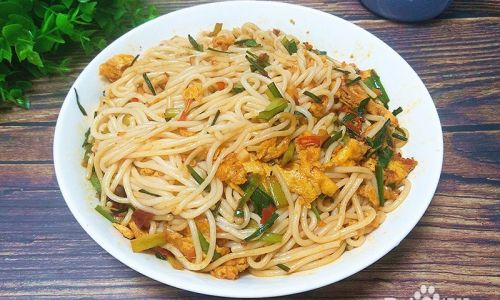
The Allure of Stir-Fried Rice Noodles
Stir-fried rice noodles are more than just a meal—they’re a canvas for flavor. The dish’s simplicity belies its depth, as the interplay of textures (chewy noodles, crisp vegetables, tender protein) and umami-rich sauces creates a symphony for the palate. Unlike fried rice, which relies on leftover grains, stir-fried noodles demand precision: the noodles must be cooked al dente, the ingredients seared at high heat, and the seasonings balanced to perfection.
This dish is also incredibly adaptable. Dietary restrictions? Swap the protein. Craving heat? Add chili paste. Short on time? Use frozen vegetables. The flexibility of stir-fried rice noodles makes them ideal for busy weeknights or elaborate weekend feasts.
Ingredients: Building Blocks of Flavor
To create a memorable stir-fry, start with quality ingredients. While recipes may vary, the following components form the backbone of most variations:
-
Rice Noodles: Fresh or dried, these noodles come in varying widths. Thicker noodles (like those used in pad see ew) offer a heartier bite, while thinner ones (like maifun) cook faster. Soak dried noodles in hot water until pliable but not mushy—typically 10–15 minutes.
-
Protein: Shrimp, chicken, beef, tofu, or eggs are popular choices. For shrimp, opt for medium-sized varieties; for beef, flank or sirloin works best. Marinate proteins in soy sauce, cornstarch, and a pinch of baking soda (for tenderizing) if desired.
-
Vegetables: A mix of colors and textures elevates the dish. Carrots, bell peppers, onions, bean sprouts, and garlic chives are classic. For a crunch, add water chestnuts or snap peas.
-
Aromatics: Garlic, ginger, and shallots form the flavor base. Mince them finely to ensure they meld seamlessly into the dish.
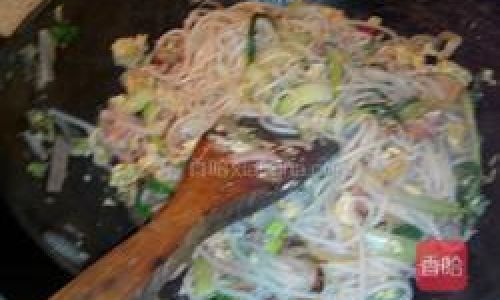
-
Sauces: A combination of soy sauce, oyster sauce, fish sauce, and a touch of sugar creates depth. For a gluten-free option, use tamari.
-
Oil: Use a neutral oil with a high smoke point, like peanut or canola. Sesame oil adds a nutty finish but should be used sparingly.
-
Optional Garnishes: Chopped cilantro, crushed peanuts, lime wedges, or sliced chili peppers add freshness and texture.
Equipment: The Wok Advantage
A carbon-steel wok is the ideal tool for stir-frying. Its sloped sides distribute heat evenly, allowing ingredients to sear quickly without steaming. However, a large stainless-steel or cast-iron skillet can work in a pinch.
Key Equipment:
- Wok or skillet
- Spatula (preferably metal for durability)
- Mixing bowls
- Sharp knife and cutting board
- Tongs (for tossing noodles)
Step-by-Step Guide to Stir-Fried Rice Noodles
Preparing the Noodles
- Dried Noodles: Soak in hot water (not boiling) for 10–15 minutes, or until pliable. Drain and rinse under cold water to prevent sticking. Toss with a drizzle of oil.
- Fresh Noodles: Separate gently to avoid clumps. Some varieties require blanching; check the package instructions.
Prepping Ingredients
- Protein: Cut into bite-sized pieces. Marinate if desired.
- Vegetables: Julienne carrots, slice bell peppers into strips, and thinly slice onions. Keep bean sprouts whole.
- Aromatics: Mince garlic and ginger; slice shallots.
- Sauce Mixture: Combine 2 tbsp soy sauce, 1 tbsp oyster sauce, 1 tsp fish sauce, 1 tsp sugar, and a splash of broth or water.
Cooking the Protein
- Heat 1 tbsp oil in the wok over high heat. Add protein and sear until golden. Remove and set aside.
Stir-Frying Vegetables
- Add another tbsp of oil to the wok. Toss in aromatics (garlic, ginger, shallots) and stir-fry for 30 seconds until fragrant.
- Add harder vegetables (carrots, bell peppers) first, stirring constantly. After 2 minutes, add softer vegetables (onions, bean sprouts). Cook until tender-crisp.
Combining Noodles and Sauce
- Push vegetables to one side of the wok. Add noodles and pour the sauce mixture over them. Toss gently to coat.
- Return the protein to the wok. Toss everything together, ensuring even distribution.
Achieving Wok Hei
- For that signature smoky flavor, crank up the heat and let the noodles char slightly in spots. This requires constant tossing to prevent burning.
Final Touches
- Drizzle with sesame oil and toss. Garnish with cilantro, peanuts, and a squeeze of lime. Serve immediately.
Tips for Stir-Fry Success
-
High Heat is Non-Negotiable: Stir-frying requires temperatures above 375°F (190°C) to sear ingredients quickly. Preheat the wok until a drop of water evaporates instantly.
-
Don’t Overcrowd the Pan: Cook in batches if necessary. Overcrowding lowers the temperature, leading to steamed—not seared—ingredients.
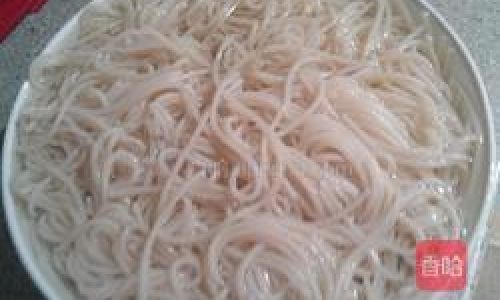
-
Prep Ahead: Chop all ingredients before lighting the stove. Stir-frying moves fast, and there’s no time to pause.
-
Taste and Adjust: Sauces vary in saltiness. Always taste and adjust seasoning before serving.
-
Noodle Texture: Undercooked noodles are chalky; overcooked ones turn mushy. Test a strand before draining.
Variations to Explore
-
Spicy Szechuan Style: Add doubanjiang (chili bean paste) and Szechuan peppercorns. Garnish with sliced scallions.
-
Vegetarian Delight: Use extra-firm tofu and a medley of mushrooms, bok choy, and edamame.
-
Thai-Inspired Pad See Ew: Substitute dark soy sauce for color and add Chinese broccoli. Crack an egg into the wok during the final toss.
-
Seafood Extravaganza: Combine shrimp, squid, and scallops with a splash of white wine for a coastal twist.
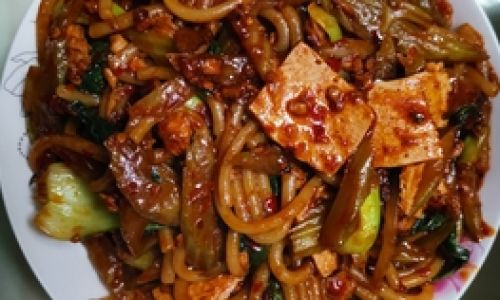
Troubleshooting Common Issues
- Mushy Noodles: Over-soaking is the culprit. Stick to the recommended time and rinse under cold water.
- Bland Flavor: Increase the sauce ratio or add a splash of rice vinegar for acidity.
- Burnt Aromatics: Lower the heat when cooking garlic and ginger to prevent bitterness.
- Soggy Vegetables: Blanch denser veggies (like carrots) briefly before stir-frying.
Serving Suggestions
Stir-fried rice noodles shine as a standalone meal but pair beautifully with:
- Spring Rolls: Crispy and refreshing, they balance the dish’s richness.
- Pickled Vegetables: A tangy side like daikon or cucumber cuts through the heat.
- Iced Tea or Beer: Cold beverages complement the dish’s spiciness.
The Cultural Tapestry of Stir-Fried Noodles
From the bustling night markets of Bangkok to the humble homes of Guangzhou, stir-fried noodles embody the spirit of Asian street food. In Malaysia, char kway teow is revered for its wok-charred flavor, while in Vietnam, phở xào offers a lighter, herb-infused take. Each region adds its stamp, whether through spices, proteins, or cooking techniques.
Conclusion: The Joy of Experimentation
Stir-fried rice noodles are a testament to the magic of simplicity. With a handful of ingredients and a bit of practice, anyone can recreate the smoky, savory allure of this dish. Don’t fear imperfection—each wok mark tells a story. Adjust the recipe to suit your taste, and soon, you’ll find yourself inventing new variations. Whether you’re feeding a family or indulging in a solo feast, stir-fried rice noodles are a celebration of flavor, texture, and the joy of cooking. So grab your wok, crank up the heat, and let the sizzle begin!

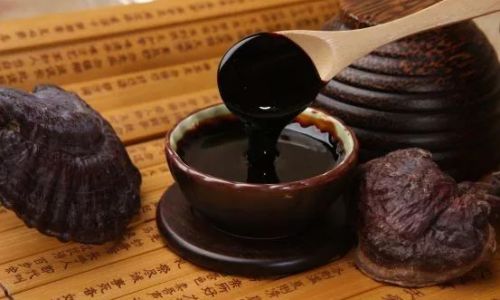

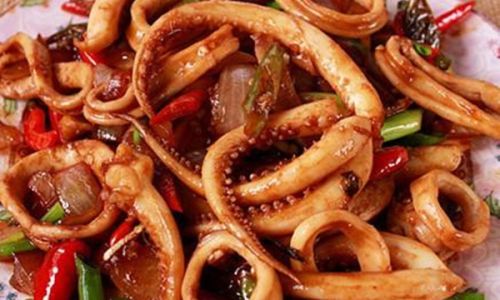

0 comments